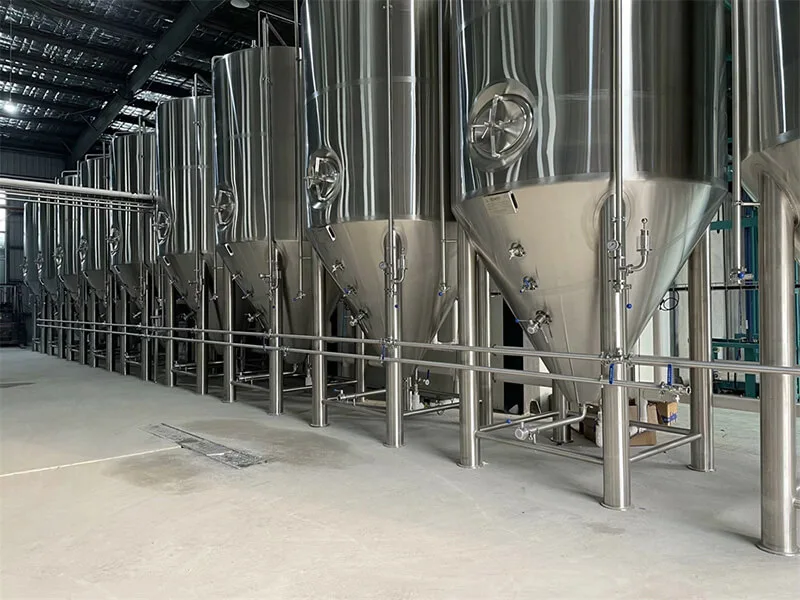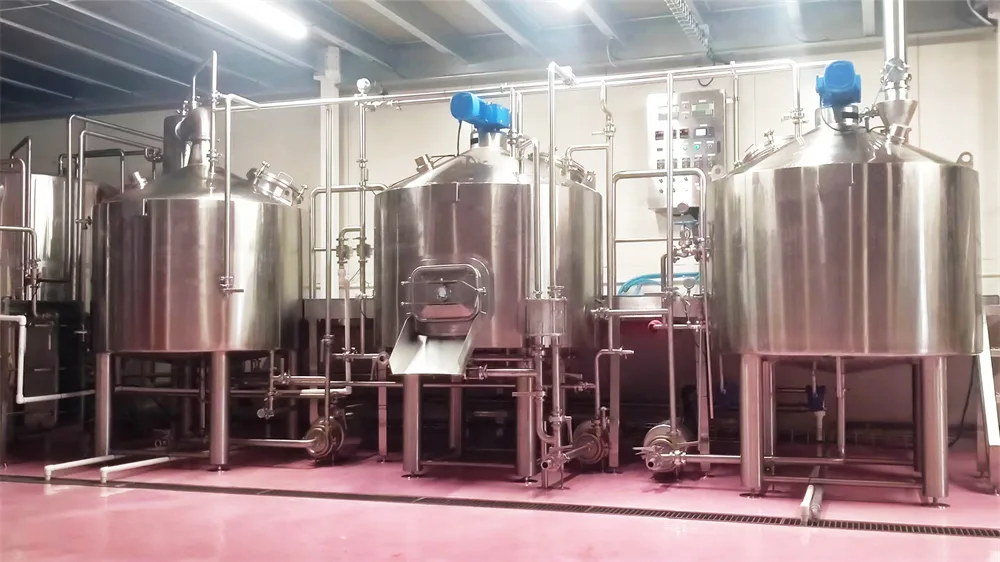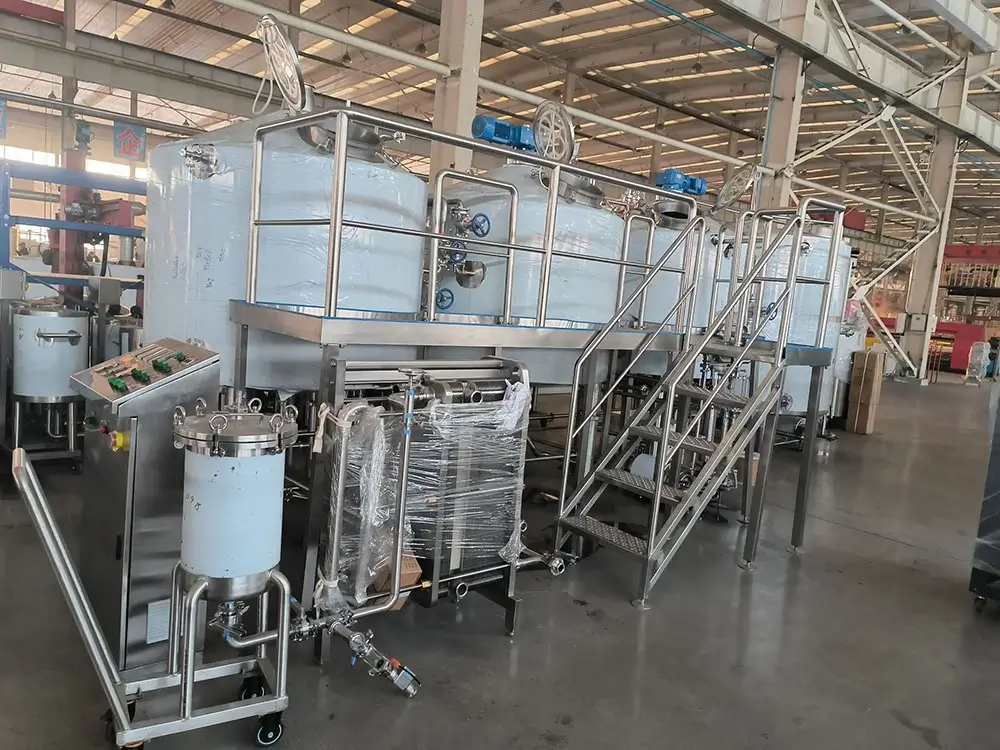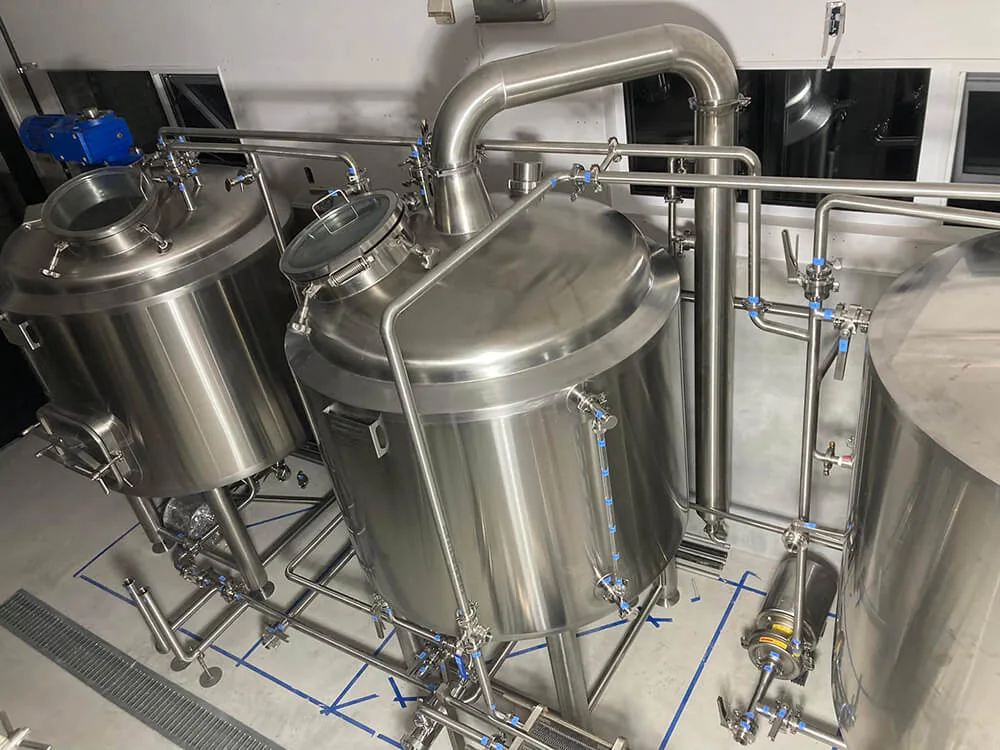Beer fermentation tanks are the heart of any brewery. While ingredients like malt, hops, and yeast set the foundation for beer, it’s the fermentation process that truly brings the beverage to life. Inside these specialized tanks, yeast transforms sugars into alcohol and develops the complex flavors, aromas, and textures that define each beer style. The design, temperature control, and sanitation of beer fermentation tanks directly influence product consistency, quality, and safety—making them one of the most critical investments for any brewery aiming to produce premium, repeatable results.
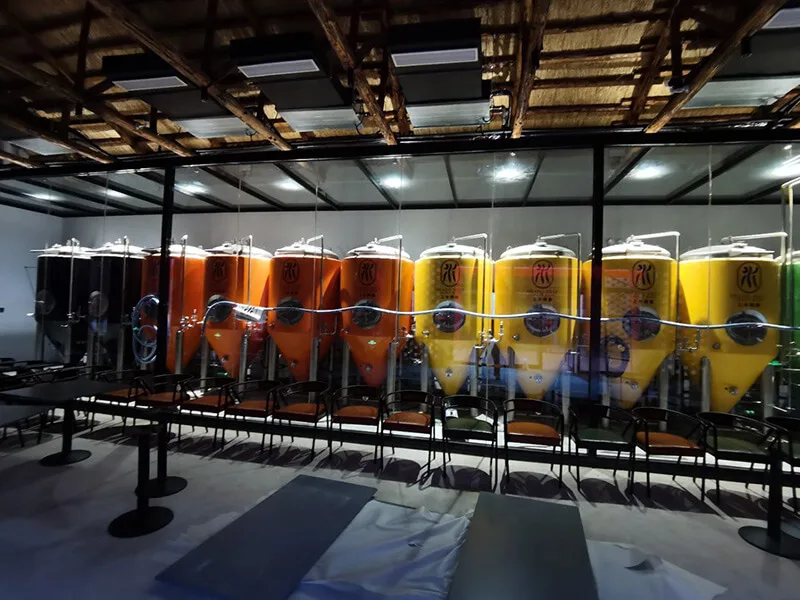
Main Features of Food-Grade Stainless Steel Beer Fermentation Tanks
METO designed and produced fermentation system meet the all the craft beer fermentation process needs, meet the demanding requirements of brewers.customized to meet the requirements of different space. Production process is strictly controlled according to ISO9001 quality management system. Three times pressure tests ensure all fermentation tanks meet the use standards and safety standards.
- Capacity:50L-100000L
- Material : SUS 304,SUS 316
- Implement the IOS9001 quality management system according to drawing, professional and perfect factory internal quality inspection process and test record;
- Laser cutting and argon shielded welding. interior passivating treatment for all beer contact parts, external wire drawing treatment, polishing precision ≤ 0.4μm
- Insulation: Low thermal conductivity PU
- Port connection way: DIN, ISO, SMS and other customized standards .
- Leakage test by water and gas for 24 hours, tank test 0.2Mpa jacket test 0.4Mpa
- Tank and Jacket Working Pressure:<0.2Mpa
- Dished top full polished , conical bottom with 60° cone (customizable)
- High-precision temperature sensor, automatic temperature control, real-time feedback of temperature curve, can remote operation
- With Safety valve, pressure regulating valve, sampling valve, Rotating racking arm beer outlet , hop add pot, carbonation stone, CIPwashing ball, cte.
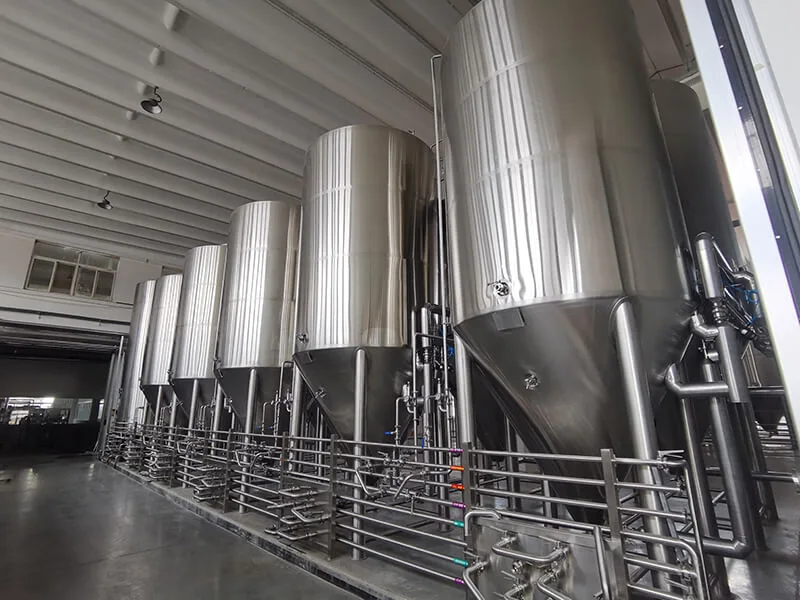
Design Considerations for Beer Fermentation Tanks
Beer fermentation tanks are one of the most important pieces of equipment in any brewery. Their design has a big impact on how well the fermentation process works and how good the final beer tastes. Below are the main factors to consider when designing or choosing the right fermentation tanks.
Material Selection
The material of a fermentation tank is key to keeping it clean and safe. Most beer fermentation tanks are made of stainless steel because it is strong, doesn’t rust, and is easy to clean. Its smooth surface prevents bacteria and yeast from sticking, helping maintain a sanitary brewing environment.
Size and Capacity
The size of the tank should match the brewery’s production needs. Tanks must be large enough for fermentation to happen without being too full. Extra space, called headspace, is needed to handle the foam and gas that form during fermentation. If the tank is too full, it can overflow and cause product loss or contamination.
Cooling and Insulation
Controlling temperature is one of the most important parts of fermentation. Beer fermentation tanks are usually equipped with cooling jackets or temperature control systems to keep yeast working at the right level. Proper insulation helps the tank maintain stable temperatures, saving energy and preventing unwanted changes that could affect flavor.
Pressure Control
During fermentation, yeast produces carbon dioxide, which increases pressure inside the tank. To stay safe and stable, tanks include pressure relief valves or adjustable controls that release extra gas when needed. This prevents damage and keeps the fermentation process under control.
By carefully considering these design details—material, size, temperature, and pressure control—breweries can create the best conditions for fermentation and produce consistent, high-quality beer every time.
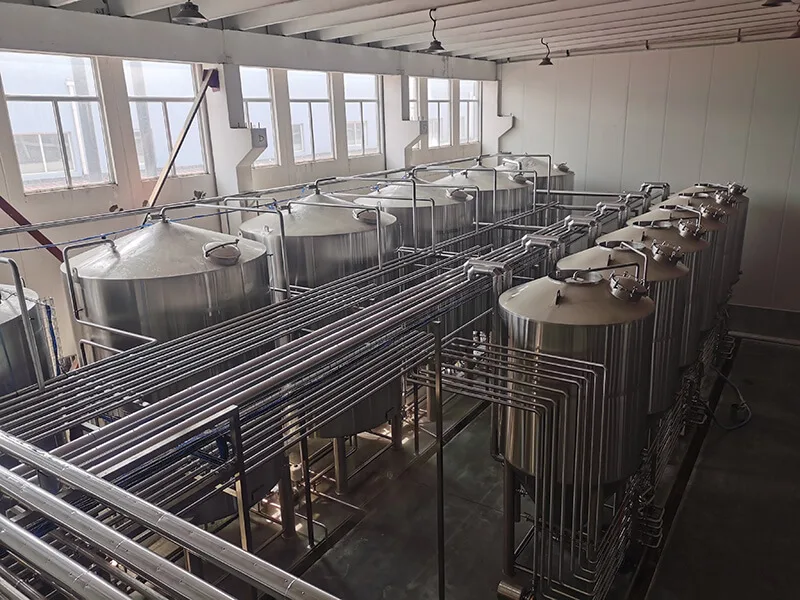
Fermentation Process in Beer Fermentation Tanks
The fermentation process is one of the most important stages in brewing beer. Beer fermentation tanks provide the perfect environment for yeast to turn sweet wort into flavorful beer. Let’s look at the key steps in this process.
Yeast Addition
Once the wort (a sweet liquid made from malted grains) is pumped into the beer fermentation tank, yeast is added. This yeast, usually a type called Saccharomyces cerevisiae, starts consuming the sugars in the wort. As it works, it produces alcohol, carbon dioxide, and many flavor compounds that give each beer its unique taste and aroma. The type of yeast and how it’s handled greatly influence the final flavor of the beer.
Fermentation Temperature
Temperature control is vital for healthy yeast activity and flavor development. Different beer styles need different fermentation temperatures. Ales usually ferment at warmer temperatures (around 18–22°C or 64–72°F), while lagers ferment at cooler temperatures (around 7–13°C or 45–55°F). Modern beer fermentation tanks are equipped with cooling jackets or glycol systems that let brewers control temperature precisely, creating the best conditions for yeast to work.
Duration of Fermentation
How long fermentation lasts depends on the beer style, yeast strain, and desired taste. Ales often ferment for one to two weeks, while lagers can take several weeks or even months. During this time, yeast continues to convert sugars into alcohol and CO₂, and the beer’s flavors slowly develop and mature. Brewers regularly check the progress by measuring gravity and tasting samples to decide when fermentation is complete.
Throughout this process, beer fermentation tanks provide a stable and controlled environment where yeast can thrive. Proper temperature control and timing help brewers produce consistent, high-quality beer with the right balance of flavor, aroma, and alcohol content.
Fermentation Process in Beer Fermentation Tanks
Fermentation is a key step in brewing beer, and beer fermentation tanks provide the perfect environment for yeast to transform wort into beer. Here’s how it works:
Yeast Addition
After the wort (sweet liquid from malted grains) is added to the tank, yeast is introduced. The yeast eats the sugars in the wort, producing alcohol, carbon dioxide, and flavors that define the beer. The type of yeast used shapes the final taste and aroma.
Temperature Control
Keeping the right temperature is vital for yeast to work properly. Different beer styles need different temperatures—ales usually ferment at 18–22°C (64–72°F), while lagers are cooler at 7–13°C (45–55°F). Beer fermentation tanks often have cooling jackets or glycol systems to maintain precise temperatures for consistent flavor.
Fermentation Duration
The length of fermentation depends on beer style, yeast, and desired taste. Ales usually take 1–2 weeks, while lagers can take several weeks to months. During this time, yeast converts sugars into alcohol and carbon dioxide, and the beer’s flavors mature. Brewers monitor fermentation by checking gravity and tasting samples.
Beer fermentation tanks provide a controlled, stable environment where yeast can thrive. Proper temperature and timing in these tanks are essential for producing high-quality beer with consistent flavor and aroma.
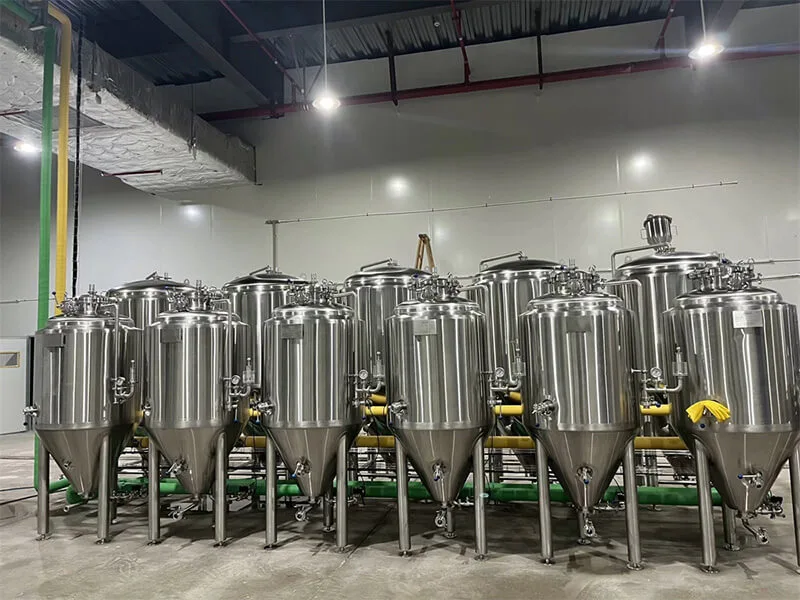
Conclusion
Beer fermentation tanks are essential for brewing high-quality beer. They provide a stable, controlled environment where yeast can turn sugars into alcohol, carbon dioxide, and unique flavors. The design, monitoring, and maintenance of these tanks are key to ensuring consistent and delicious beer every time. With ongoing technological improvements, beer fermentation tanks continue to evolve, helping brewers create new flavors and exceptional beers. If you are interested in our beer fermentation tanks, feel free to contactar-nos for more information.

